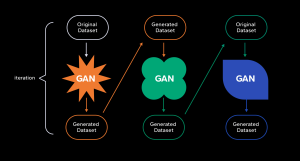In today’s digital landscape, ransomware has emerged as one of the most formidable cybersecurity threats, affecting individuals and organizations alike. Defined as malicious software that encrypts a victim’s files, ransomware demands a ransom payment for the decryption key. This article delves into the nature of ransomware, its types, potential impacts, and effective strategies for prevention and recovery.
What is Ransomware?
Ransomware is a type of malware that locks or encrypts files on a victim’s computer, rendering them inaccessible. Once the files are compromised, the attacker typically demands a ransom payment, often in cryptocurrencies like Bitcoin, to unlock the data. The payment usually comes with a deadline, adding urgency to the victim’s situation.
Ransomware can infiltrate systems through various methods, including phishing emails, malicious downloads, or exploiting software vulnerabilities. The rise of ransomware has been fueled by the increasing sophistication of cybercriminals and the growing reliance on digital data.
Types of Ransomware
Ransomware can be classified into several categories, each with unique characteristics and methods of operation:
- Crypto Ransomware: This is the most common type of ransomware. It encrypts files on the infected device, making them inaccessible without a decryption key. Victims are typically presented with a ransom note containing instructions for payment.
- Locker Ransomware: Unlike crypto ransomware, which targets files, locker ransomware locks the victim out of their device entirely. Users are unable to access their operating system until the ransom is paid.
- Scareware: This type of ransomware uses fear tactics to pressure victims into paying. Scareware may display alarming messages, falsely claiming that the victim’s device is infected with viruses or illegal content.
- Doxware: Doxware threatens to expose sensitive or embarrassing information about the victim unless a ransom is paid. This type of ransomware can be particularly damaging, as it targets personal or proprietary information.
- Ransomware-as-a-Service (RaaS): This model allows cybercriminals to lease ransomware to other criminals. This has led to an increase in ransomware attacks, as individuals with minimal technical skills can deploy sophisticated malware.
The Impact of Ransomware
The consequences of a ransomware attack can be severe, affecting both individuals and organizations in various ways:
When files are encrypted, victims may lose access to crucial data, leading to disruptions in business operations or personal losses. In some cases, if backups are not available, the data may be permanently lost.Ransom payments can range from hundreds to millions of dollars, depending on the scale of the attack and the perceived value of the data. Even if the ransom is paid, there’s no guarantee that the attacker will provide the decryption key or that the files will remain intact.For businesses, ransomware attacks can lead to significant downtime, impacting productivity and revenue. Recovery efforts can be time-consuming and costly, requiring IT resources and personnel.
Organizations that fall victim to ransomware attacks may suffer reputational harm. Clients and customers may lose trust in a company’s ability to protect sensitive information, leading to potential loss of business.In some cases, organizations may face legal consequences if they fail to protect sensitive data adequately. This can lead to fines and regulatory scrutiny, particularly for businesses that handle personal or financial information.
What to Do If You’re Attacked
If you find yourself a victim of a ransomware attack, it’s essential to act quickly:
- Disconnect affected devices from the network to prevent the ransomware from spreading.
- Paying the ransom does not guarantee that your files will be decrypted and may encourage further attacks.
- Notify law enforcement and report the attack to relevant authorities. This can help track and combat cybercrime.
- If backups are available, prioritize restoring data from them. Ensure that backups are free of malware before restoring them.
- Seek assistance from cybersecurity professionals who can help assess the situation, remove the malware, and restore systems.
Conclusion
Ransomware poses a significant threat to individuals and organizations, with the potential for severe financial and operational consequences. Understanding the types of ransomwares, their impacts, and effective prevention strategies is crucial for safeguarding sensitive information. By implementing comprehensive security measures and fostering a culture of awareness, individuals and organizations can mitigate the risks associated with ransomware and protect themselves from future attacks. In an age where cyber threats are constantly evolving, proactive vigilance is key to maintaining cybersecurity.







+ There are no comments
Add yours